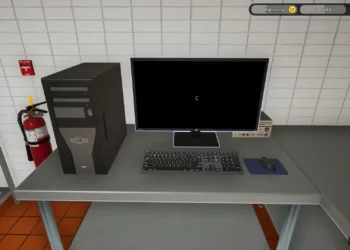Memoriapolis is a game that tests your ability to manage time and resources. As your city develops and your civilization flourishes, time becomes your only true legacy, while your power and infrastructure expand. The game boasts intricate mechanics, and fully understanding them can be quite challenging.
If you’ve tried other strategy or city-building games, you’ll notice some similar elements here. To start, you’ll need to gather traditional resources—after all, you can’t construct your city without some wood and stone. However, there are many additional resources in this game to discover!
Warning: Memoriapolis is currently in early access, and its content may change.
How to Acquire Basic Resources
In Memoriapolis, resources are crucial. You’ll use them to build, upgrade, and enhance various structures. While there is a diverse selection of resources available, you won’t unlock all of them at the beginning.
To harvest certain resources, you’ll need to strategically place buildings near resource-rich areas. Some resources, however, can only be created by processing the materials you already possess using specific facilities. Here’s a comprehensive list of resources available and how to obtain them:
| Resource Name | Age Requirement | How To Obtain |
|---|---|---|
| Food | Antiquity Age | Construct a Small Farm; placement affects yield. You can produce food from fields, but they occupy significant space. Upgrading your Cutting Camp can also yield food every cycle. |
| Wood | Antiquity Age | Build a Cutting Camp near foresters to harvest wood with ease. Most maps provide ample foresters. |
| Stone | Antiquity Age | Create a Small Quarry near hills or mountains to collect stone. You can also gather sand and clay from this facility if set up properly. |
| Clay | Antiquity Age | A Small Quarry near water bodies is needed for Clay. You can also get stone and sand here if configured correctly. |
| Sand | Antiquity Age | Assemble a Small Quarry close to seas, lakes, or rivers to find sand easily. |
| Gold | Middle Ages | Build a Small Mine unlocked in the second age to gather gold from hills and mountains. |
| Iron | Middle Ages | Use a Small Mine, found near hills, to collect iron, which is more plentiful than gold. |
| Wooden Beams | Antiquity Age | Set up a Carpentry building to produce Wooden Beams from wood. |
| Rubbles | Antiquity Age | Create a Carver building to turn stones into Rubbles. |
| Bricks | Antiquity Age | Use a Brickwork to convert clay into bricks. |
| Tiles | Antiquity Age | Build a Tilery to produce tiles from sand. |
| Steel | Middle Ages | Make steel in a Forge by converting iron. |
| Gold Leaves | Middle Ages | Use a Goldbeater to transform gold into Gold Leaves. |
| Precious Stones | Middle Ages | Found occasionally through upgraded quarries and mines, but largely based on chance. |
How to Obtain Blueprints
Blueprints are vital for unlocking and upgrading buildings from the Building Tree. The key structure for acquiring Blueprints is the Architectural Office. Remember, you can only build one Architectural Office in the game, so prioritizing its upgrade will maximize your Blueprint production.
How to Acquire Culture Points
Culture Points do not come from structures directly. Instead, they stem from building Cultural Buildings that attract various factions to your city, generating Culture Points based on their cultural identities. This resource is necessary for multiple actions such as constructing more cultural buildings or engaging in corruption schemes.
How to Earn Gold Coins
While you may not need Gold Coins at the game’s start, they become essential later on. Familiarize yourself with earning them, especially after constructing the Macellum building, where you can trade resources with other cities. You can also use Gold Coins to purchase resources, build trade routes, and tax factions in your city for additional income.
In summary, strategy and resource management are pivotal in Memoriapolis as players must maneuver through challenges while continuously growing their cities and civilization.











